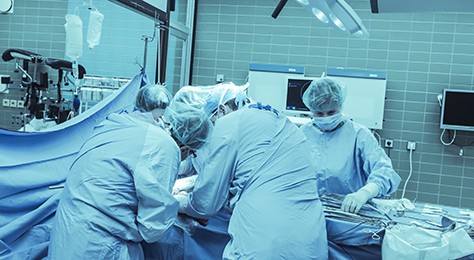Waitlists for life-saving kidney transplants are long and every donated kidney is precious. That's why patients on the waitlist are screened regularly to ensure their suitability for transplant. But is the screening process as effective as it could be?
That's the question explored by UBC Sauder professor Steven Shechter and his colleagues, Woonghee Tim Huh of UBC Sauder and Alireza Sabouri of the University of Calgary. The team devised a strategy— the first evidence-based tool of its kind— that would reduce the number of risky transplants by 23 per cent and reduce the annual number of screenings by 27 per cent.
In this Q&A, Shechter explains how their strategy can improve transplant screening, and in turn, cut costs to the health-care system.
Why is it important to improve the transplant screening process?
Right now it’s a big challenge for BC Transplant to decide when to screen patients for possible surgical risks. This is a big issue for all transplant centres, because there were no evidence-based standards or consensus on who should be screened at what time.
For example, people waiting for kidney transplants are at high risk of cardiovascular disease, so periodic screening not only benefits the patient but also ensures that scarce organ donations are allocated to the right people. Cardiovascular disease is often a silent disease, so people don't know they have a serious level of it until they’re screened. Patients can wait years for a transplant, so as they're waiting, they may have reached a level of the disease that would place them at high risk of surgical complications.
What is the current screening system like?
In B.C., the screening process is very simplistic. Health-care providers screen high-risk patients every year and low-risk patients every two years. But what this fails to consider is how close someone might be to receiving a transplant offer. These patients are waiting a long time and as they get closer to the top of the waitlist, it makes sense to be more vigilant about screening them. The current policies don't consider the expected time to receive a transplant, so that's something our methodology brings to the table.
What would work better?
When you first go on the waitlist, the expected time until the transplant might be three years away. Early on, maybe the screening doesn't have to be once a year, but as time goes on, maybe it should be every six months. Rather than a fixed policy, we think about a policy that adapts with the change in someone's rank on the waitlist.
Using data that considers where you’re ranked on the waitlist, your age and blood type – which can affect how much time you might have to wait – the model can recommend the next screening time. It does a better job of rationing health-care resources, and reduces the risk of a risky transplant without incurring extra screening costs.
Could this approach be applied outside B.C. and to other types of transplants?
Our case study is focused on the B.C. transplant setting, but this is certainly something that could be applied to data from other transplant centres, and not just for kidney transplants, but for other organ transplants as well — areas like liver transplant where patients might develop comorbidities while waiting and could be at serious risk of adverse outcomes.



